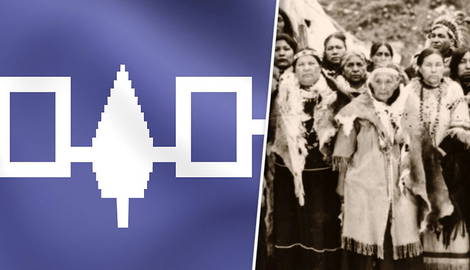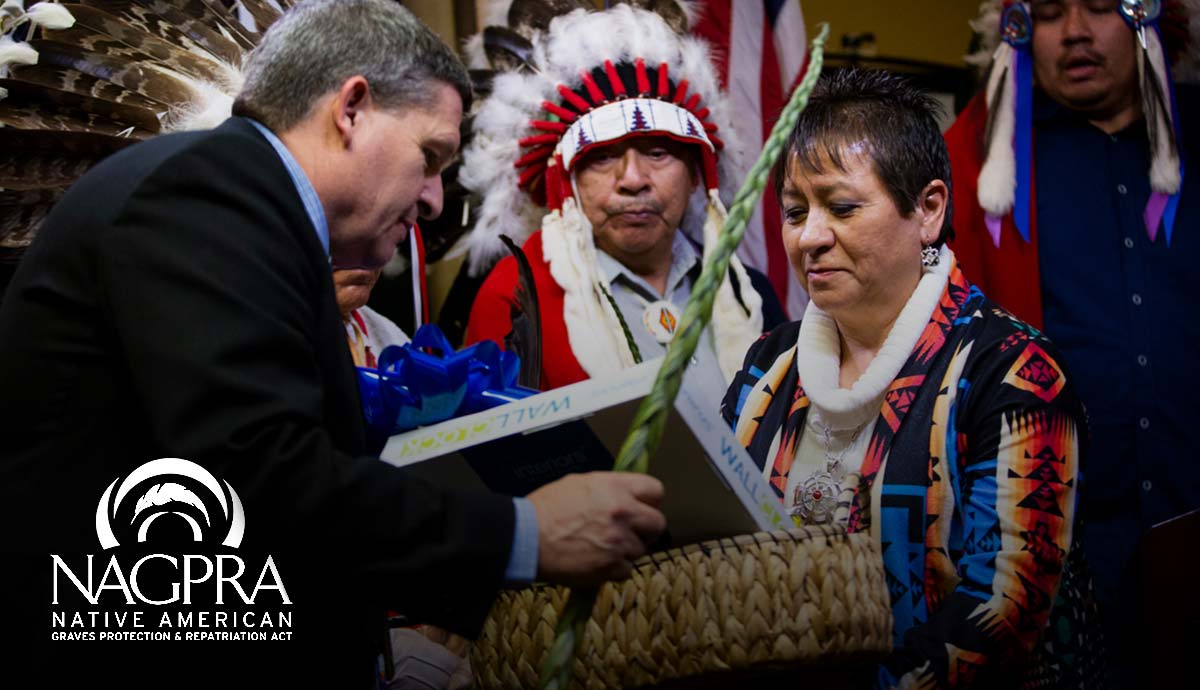
Famed alliances have impacted history for generations; most noteworthy include the Allied Powers in WWII or the French support of the newly forming United States in the American Revolutionary War. However, one lesser-known collaboration paved the way for the success of not only their own entities but later the colonial powers that would consume them. The Iroquois Confederacy, or the Haudenosaunee, was an immense North American power for years, an entente that would hold power over economics, politics, and culture for many people. They impacted trade, drove out competitors, and helped their allies win wars that altered the course of history.
The People of the Longhouse

The title “Iroquois Confederacy” actually refers not to the Indigenous people who make up the alliance but to the language they speak. This term was given to the group by French settlers, and English colonists called them “The League of Five Nations.” The alliance has also been referred to as the “Iroquois League.”
However, a more appropriate term for the group is the Haudenosaunee, which translates to “people of the longhouse.” This group of five, later six, tribes formed around their common language, close proximity, and cultural similarities to defend their common interests and protect their people. The Iroquoian language group that the more common name of the organization comes from is not a single language but over ten. Other tribes speak Iroquoian languages that are not part of the Confederacy, such as the Cherokee. Iroquoian is one of approximately twenty language groups encompassing dozens of Indigenous tongues across North America.

The People of the Longhouse were aptly named for their unique homes. While Native Americans are often associated with tipis, those structures were only realistically used by a few tribes, such as the Lakota. Longhouses were more appropriate for the Iroquois-speaking people and their environment in the Northeast and Eastern parts of North America, where winters can be harsh.
Most of their traditional territory stretched across what is now New York State but could reach further south and north at times. Longhouses were often arch-shaped and, as the name implied, long. They were covered in bark for protection from the elements and much more permanent in nature than a tipi.
However, communities typically relocated every twenty to thirty years as resources dwindled, particularly firewood and bark for home repair. The five tribes that originally encompassed the confederacy were the Mohawk, Cayuga, Oneida, Onondaga, and the Seneca. The Tuscarora later joined to complete the six. This alliance is one of the oldest and longest-lasting democracies in the world.
Formation and Organization

When considering the history of what is now the United States and Canada, many people think about the beginning as when the first settlers arrived and began colonizing. However, those European explorers were encroaching on a thriving land that was already home to hundreds of thousands of people with successful economies, governments, and families. The Haudenosaunee was flourishing upon the arrival of European colonizers and, in some cases, was responsible for those settlers’ survival.

Members of the Haudenosaunee nation may have been present in North America as far back as 4000 BCE. Estimates of when the alliance formed are varied, but it is estimated at approximately 1142 CE based on a mixture of oral tradition and archaeological evidence.
According to Haudenosaunee oral tradition, the confederacy was founded by a prophet known as the Peacemaker, with help from a man known as Aionwatha. Aionwatha is more commonly known as Hiawatha but should not be confused with the main character in the famous poem by Henry Wadsworth Longfellow, “The Song of Hiawatha.” Though the poem refers to him, the protagonist is actually Algonquian, not Iroquois, and this is a common cultural misconception.
Ladies Lead

Each of the six nations in the alliance operates in a matrilineal clan system. Matrilineal refers to how family lineage is emphasized on the mother’s side rather than on the father’s side, as in many European traditions. Clans are groups of extended families that are headed by a clan mother. Each clan has its own name, usually in reference to an element of nature.
In the past, clans lived together in one large longhouse, with uncles, aunts, grandparents, cousins, siblings, and more sharing living quarters. Typically, about sixty people lived in a longhouse. Upon marriage, a man moved in with his wife’s family but still had responsibilities to his mother’s family and would aid in raising any nieces and nephews if he had sisters.

Clan mothers weren’t just heads of the family. They had important duties to their communities. The clan mother was responsible for making all major decisions affecting the clan, naming all children, selecting a male counterpart to help run the clan, and ensuring that all clan members were fed and cared for appropriately.
The male leader of the clan was the hoyaneh and was generally chosen on the basis of honor and concern for others. If found unfit for his position, he could be removed by the clan mother. The hoyaneh would serve on councils for the entire confederacy. The Grand Council dealt with issues that affected all the nations within the confederacy and had members from each tribe.

The Grand Council took place in both a physical and symbolic longhouse. Each tribe had its role within the symbolic longhouse based on the history of the confederacy. The Onondaga were the Keepers of the Fire. The Onondaga, along with the Mohawk and Seneca, were also the Elder Brothers within the longhouse, while the Cayuga and Oneida were considered the Younger Brothers. Having joined later, the Tuscarora are represented in council affairs by the Oneida.
Members of the council met to discuss and decide on issues. The confederacy had a constitution and still maintains one to this day, though when it was actually written down is unknown. However, the effectiveness of this document is undeniable, as it was considered an inspiration to the framers of the United States Constitution, particularly Benjamin Franklin, who was thoroughly impressed by the efficiency and long-standing success of the group. The Grand Council, and in turn, the confederacy, places equal emphasis on law, nature, and society in its proceedings and governance.
Conflict and War

Historically, the alliance fought fiercely when faced with a common enemy. In the 17th century, they were involved in a number of conflicts, particularly against the Algonquian. Like the Six Nations, the Algonquian were not a single tribe but a confederacy united on the basis of cultural similarities and a common language. The conflict between these two groups resulted from their pursuit of a shared interest: furs, particularly beaver pelts.
The fur trade was booming at this time, with beaver hats and similar fashions all the rage in Europe. French and British traders were working with Native Americans to purchase the raw materials necessary to profit from these goods, and it was a race to see who could supply them with the most and the best furs.
The Iroquois-speaking nations had hunted beaver to near-extinction in their homelands via British trade by the mid-17th century. They then decided to push westward to Algonquian-occupied lands in pursuit of fresh game. The Algonquian were heavily involved in the fur trade themselves and engaged in transactions with the French. Conflicts quickly arose and would last until the end of the century, often referred to as The Great Beaver Wars.
A Revolution Comes

The Six Nations remained allied with the British during the French & Indian War but grew concerned with continued British expansion and civil conflict during the Revolutionary War period. The Council chose to remain neutral at the onset of the war. However, pressures from both England and the rebel colonists soon gave way to splits–not only among the member nations but even within nations and families.
Some worried that their people had a better chance of survival with the British, their old allies, while others believed that the rebels better understood the plight of the Indigenous people and their desire for freedom and would help them keep their land. Though individuals did vary, the Oneida and the newly joined Tuscarora were the only two bands that largely gave their support to the rebel colonists.
It was the first time history has noted any major rift in the confederacy, and the war would leave physical and emotional wounds that would take a great deal of time to heal. The Treaty of Paris that ended the Revolutionary War did not take into consideration any Indigenous tribes, their opinions, or needs, though many were greatly entrenched in the matters of the war.

After the Revolutionary War, the majority of the Haudenosaunee became confined to reservations rather than living in their traditional lands. It was during this time that many adapted from living in longhouses to living in European-style wood-frame homes. However, longhouses were still maintained as community gathering places and for cultural ceremonies.

The Haudenosaunee would maintain their confederacy and presence throughout the nineteenth and twentieth centuries despite their new living situation. Haudenosaunee culture was an inspiration to women’s rights leaders in the nineteenth century, as they watched Iroquois women make decisions of their own free will while married white women lived without any rights or freedoms, at least in the eyes of the law.
Contemporary Presence

The six nations of the Haudenosaunee are still active today. Though white encroachment and assimilation policies reduced their power and influence steadily throughout the nineteenth and twentieth centuries, the groups still number in the tens of thousands today. Their traditional lands have been reduced to reservations, but they are some of the most populous reservations today, particularly in Canada.










